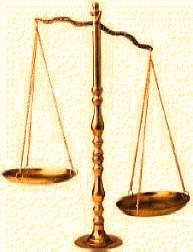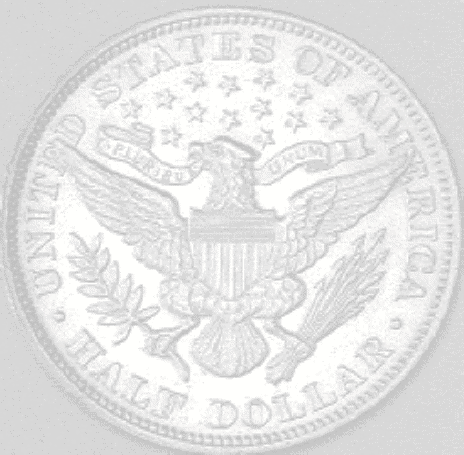
|
|
||
|
|
|
|
|
|
||

-20-
FOR BETTER OR WORSE:
What is a "Dollar?"
The first "thalers" were minted in Joachimsthal,
Bohemia in 1581 by the Count of Schlick. They were therefore called "Joachimsthalers"
or "Schlickenthalers" or simply "thalers." As the German word “thal” is
equivalent to "dale" or "valley" in English, the "thaler" was anglicized
and became the "daler" or "dollar" (White, 30).
The Act of April 2, 1792 fixed the weight of the
"dollar” at 416 grains (Yeoman, 123) which would contain 371.25 grains
of pure silver (White, 40). The silver "dollar" would thus be 11/12 or
892.4 fine (Yeoman, 123). Stamped into its edge were the words, "Hundred
cents, One Dollar or Unit."
At the recommendation of Alexander Hamilton, the
mint ratio was fixed at 1 to 15. He ascertained the Spanish silver
"dollars" that had been declared the monetary unit of the United States
by the Congress of the Confederation weighed an average of 371 grains of
pure silver. The commercial equivalent in gold was 24.75 grains of pure
metal. Fifteen times 24.75 is 371.25 and became the standard grains of
silver in the silver "dollar" (White, 40). It was not long, however,
before people became convinced the "dollar” was a physical entity rather
than a measure of weight fixed by Congress (Wilber, 10).
Devaluation
The first devaluation of
our coinage occurred by Act of June 28, 1834. On that day the Congress
of the United States reduced the weight of gold in the dollar from 24.75
grains of pure metal to 23.2 grains. The standard weight was reduced
from 27 grains to 25.8 grains, thus reducing the fineness from 916.666
to 899.225 (“Coins and Currency”, 1). God demands a perfect and just
weight and measure, and condemns every system that can be changed at
will. Since there is only one Lawgiver and that is God Himself, the
Apostle admonishes, "Let every soul be subject unto the higher power."
(Romans 13:1) Congress is no exception. The action by Congress
constituted fraud against the American people, and was the same kind of
fraud as "clipping" the coins. *
*"Coin clipping" was a practice
whereby coins were cut or shaved by their holders. It flourished during
those times when morals were debauched and the public sense of right and
wrong was deadened,
According to a Memorandum made by William
Penn for the Earl of Bellomont, the value of the Spanish dollar
circulating among the American colonies in the year 1700 varied from 6
shillings 9 pence in New York to 4 shillings 6 pence in Maryland, and
was due to their being clipped. So serious was the situation, that on
June 18, 1704, Queen Anne issued a proclamation declaring the value of
the Spanish dollar to be 6 shillings. This valuation came to be known
everywhere as "Proclamation money" or "Proc. money." --White, pp. 15,16.
In 1652, the General Court of Massachusetts authorized
the first mint in the English colonies, and called for the coining of
the "Pine Tree" shilling. It was the first coin to be minted in English
America, the Spanish having established a mint in Mexico City in 1535.
--Yeoman, p. 14.
In his book, A Historical Account of Connecticut
Currency and Continental Money, And The Finances Of The Revolution,
Mr. Henry Bronson considered the debasement of the Massachusetts "Pine
Tree shilling from 93 grains to 72 grains, an act of intentional fraud
and one which resulted in its creditors being cheated of 25 percent of
their dues. --White p, 14.
Mr. White correctly
observes, “The question in the forum of morals is not what a dollar will
buy, but what a 'dollar' is" (White, 219). By the Coinage Act of 1792,
Congress declared a "dollar" in gold to weigh 24.75 grains of pure metal
with a total weight of 27 grains. What then was this new coin that was
circulated as a "dollar?" It could be passed upon the American people as
a "dollar" only by fraud.
